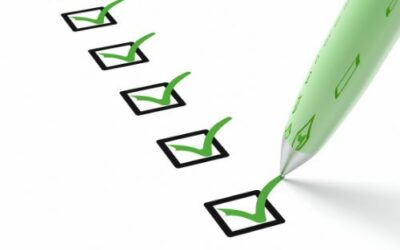
Those who use an asset register will tell you how important it is to ensure it is accurate. Having a register that is completely accurate will allow you to control every single asset you own. In addition to making equipment tracking easy, it also allows you to create data. This data can show you how your business is doing. With this information, you can see where you are falling behind and where you are excelling. As you can see, an accurate register can do quite a lot.
What Exactly Is An Asset Register?
So what exactly is an asset register and why do you need one? As we have already seen, it allows you to control your assets. Additionally, it allows you to see how many assets you have. This can be very useful when you want to share assets between departments or you simply want to know how much your business is worth.
An asset register is, in this case, a digital register that contains your assets and details about them. Regardless of how many assets you have or even what sector you’re in, you can find having a digital register very beneficial. It makes equipment tracking easier and even allows you to see where all of your assets are.

How Can An Asset Register Help With Equipment Tracking?
So how does having something digital make equipment tracking easier? The truth is that it allows you to understand your assets on a whole new level. A register can do more than just show you where everything is. It can help you to set up asset maintenance reminders. You can organise your assets into different collections and, as previously mentioned, you can see where everything is.
When you know where all of your assets are you know whether they are in the correct location. If you have many assets dotted around different areas it can often be hard to know what is where. Thankfully, an asset register can make knowing where everything is much easier. All that you need to do is attach a QR code or an RFID tag to each asset. Upon scanning the tag or code you can create a digital profile. This profile needs to be populated with information about the asset in question. Thanks to the way that an RFID tag works, upon scanning one you can automatically locate your asset. In this way, tracking your equipment becomes a million times easier.
You do not have to work in multiple locations to benefit from having an accurate register. You can work in one location and even track fixed assets. Knowing where everything is and who is using it can help your business in many different ways.
Why Your Register Needs To Be Accurate
So why does your asset register need to be accurate? The answer is because that makes equipment tracking easier. If you have used a spreadsheet in the past to help you track assets it’s likely it contained a few errors. No matter how hard we try to ensure a spreadsheet, paper file, or document is error-free, we humans make mistakes. Software, however, does not. Software does exactly as it is told/programmed to do.
If you want to keep your business organised and see where your assets are, you need an accurate register. If you want to look after your assets and regularly maintain them, you need accuracy. Wish to gain access to data about your equipment so you know where and how it’s being used? Guess what? Having an accurate register can help with this.
Accuracy is so important it allows you to see your business for how it is. You can see whether invoices have been paid, how many orders you’ve sent out, if you’ve misplaced a laptop, and where it is. When you have accuracy you know what’s what and you can have peace of mind.
How To Ensure Your Asset Register Is Always Accurate
In the world of equipment tracking, and, in fact, tracking any type of asset, accuracy is key. But now do you ensure your register is as it should be? It’s simple. Add every single asset to your new register and enter as much information about them as possible. When you obtain new assets/tools/vehicles/equipment, and so on, add them to the register.
Always add an RFID tag or a barcode to a flat part of your assets so it stays in place. Tracking equipment that’s used outside or often gets dirty? Add the tag to the inside of the equipment or in an area where dirt does not go. Finally, use an app or an online portal that allows you to gain easy access while also offering you a range of features. Software such as this can prove to be very useful as it will help you control your assets and continually update your asset register.
Would you like to chat with an expert about using an asset register for equipment tracking purposes? Contact us today at team@itemit.com.

Try itemit
Choose a better way to track your assets. Start your free 14-day trial now!

Keep Learning
itemit Blog
Tips, guides, industry best practices, and news.
What To Include In Your Fixed Asset Register
What should you include in your fixed asset register and how can you make it work for you? Read this post now to find out!
What Exactly Is An Asset register?
What exactly is an asset register and will your chosen asset register format offer you everything you need? Read this post to find out!
How Your Business Can Save Money By Using An Asset Register
How can you save your business by using an asset register app? Read this post now to uncover the secrets that could help your business thrive!




